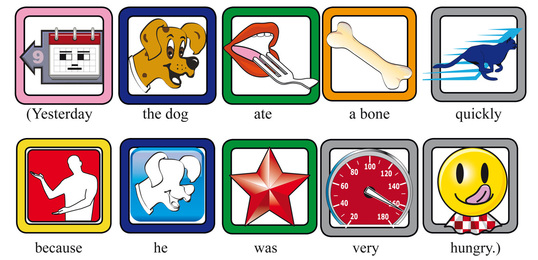Here are six tips I can share based on my own experience and the advice of language teachers at Tribeca Language and other schools.
 1. Be clear: The
teenage brain is going through huge developmental changes. From day to
day a student may appear to be a different person - and they actually
are! With all the neural, hormonal and social changes, not to mention
their body shape and size changing and growing, teenage life can be very
confusing. So keep things clear in the classroom.
1. Be clear: The
teenage brain is going through huge developmental changes. From day to
day a student may appear to be a different person - and they actually
are! With all the neural, hormonal and social changes, not to mention
their body shape and size changing and growing, teenage life can be very
confusing. So keep things clear in the classroom. 2. Keep it simple:
You might think it's exciting to mix multiple topics and activities,
but many teachers find it's more effective to provide a simple routine
so that students always know what to expect. When students don't
understand the purpose of the lesson, don't know how to perform the
activities expected, or are unclear about the outcomes you are looking
for, you can lose some or all of the students' attention very quickly.
2. Keep it simple:
You might think it's exciting to mix multiple topics and activities,
but many teachers find it's more effective to provide a simple routine
so that students always know what to expect. When students don't
understand the purpose of the lesson, don't know how to perform the
activities expected, or are unclear about the outcomes you are looking
for, you can lose some or all of the students' attention very quickly. 3. Be brief: Anything
that seems to go on and on and on
3. Be brief: Anything
that seems to go on and on and on can appear to be a chaotic, impossible topic to a teen. We are language teachers - we think language is fascinating! But with teens, we need to put our brakes on and take breaks. That usually means breaking a longer activity into shorter parts with c
lear start and stop times. Briefer lesson segments also provide you with better ways to signal when it's time to talk and interact, versus when it's time to remain silent and listen to others.
4. Remain in the target language: Tell students what you expect, and write on the board, flipchart or Smartboard, provide handouts and assignment sheets, to give every student multiple ways to make sure they know what's going on and what you expect of them. That's a lot easier to do, when you use a visual scaffolding system such as the QTalk Method, or a story-based method such as TPRS.
5. Be silent: Leave silent pauses between your sentences. Provide time for sustained silent reading or study - even if it's only three minutes to let students reset their attention. Any single activity should last no more than five to eight minutes without a pause - a chance to reset, recalibrate, or just let students absorb for themselves what they have achieved.
6. Be active: If you are standing or sitting in front of the class, static, you will be boring. If you move purposely and comfortably throughout the classroom, engaging with individual students or small groups, you will keep everyone's attention - they never know when you might walk right up to them and ask a question.
Use these six tips and you will keep your teens focused and learning during every language class.
For more information about how to use the QTalk visual method, visit the QTalk Method training site:
http://qtalktraining.weebly.com/
If you'd like to find out more about free samples, pricing and options for schools, homeschools and individuals for the various QTalk Method materials suited to teenage language learners, visit www.QTalkPublishing.com, the sole source provider subscriptions, publications and classroom manipulatives to support Maurice Hazan's QTalk Method. You would want to look at the Sapling materials for Level 1 and Level 2. Some older teens might also benefit from the Tree materials, so take a look at those also.


No comments:
Post a Comment